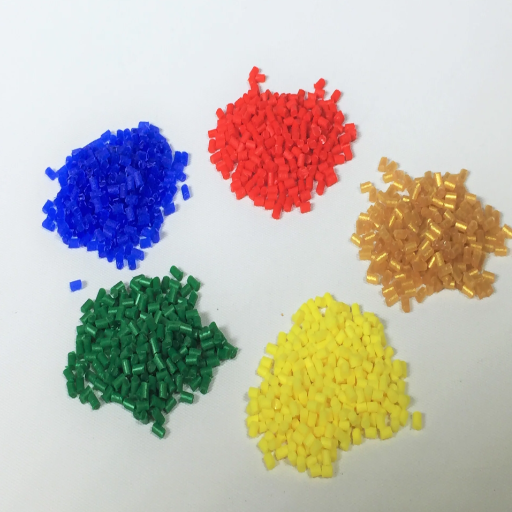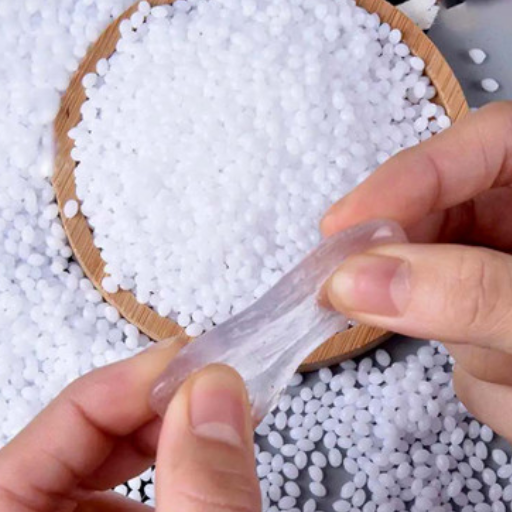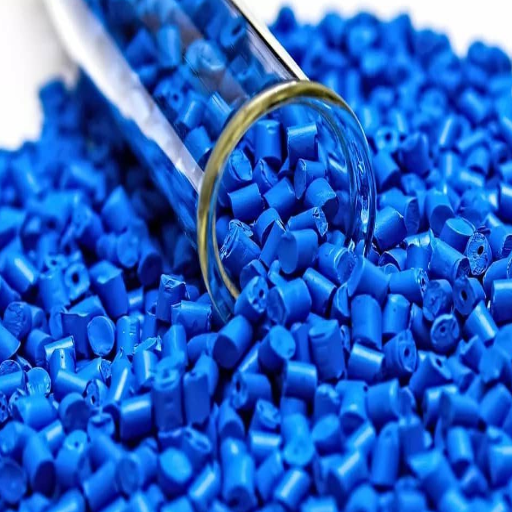The most relevant term used for Perfluoroalkoxy is PFA resin, known to be the most sophisticated class of fluoropolymer plastics with the exceptional ability to withstand corrosive materials, a considerable degree of thermal stability, and outstanding nonstick properties. Used for industries like electronics and chemical processing, PFA resin is a game changer where one needs functionality in a harsh environment. This guide comprehensively explores PFA resin, its composition, essential properties, the method of manufacture, and the most critical areas of application. Suppose you are looking for technical information for material selection or to understand its applications. In that case, this article is intended to provide information on how to manipulate one of the most sophisticated fluoropolymer plastics known today.
What is PFA resin, and how does it differ from other fluoropolymers?
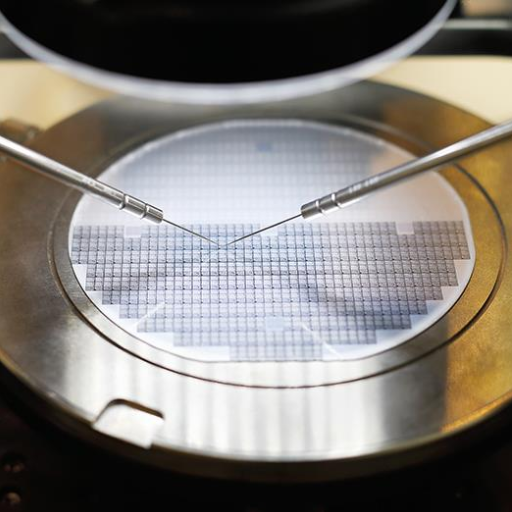
Polytetrafluoroethylene, also known by the abbreviation PFA, is among the most famous manufacturers of polymers that are remarkably resistant to chemical substances, have high thermal stability, and possess a non-stick character. PFA is a copolymer of TFE and PFAVE, which makes PFA more flexible and easier to work with than other fluoropolymers such as PTFE. PFA is a melt-processable fluoropolymer, meaning it is easy to form into intricate designs; therefore, PFA can be used to make wear-thinner coatings. PFA, according to research, also showed a strong ability to withstand temperature extremes as well as complex chemicals and, at the same time, possess good optical clarity and lower porosity, which makes PFA ideal in industries that need purity and precision at the same time. These characteristics make PFA different from other fluoropolymers, making it suitable for use in high-precision and demanding fields such as manufacturing of semiconductors, chemical processing, and even pharmaceutical production.
Understanding the chemical composition of PFA
Perfluoroalkoxy alkane(PFA) is a type of fluoropolymer that contains only carbon and fluorine atoms. The presence of perfluoroalkoxy side branches makes PFA unique, as it increases the heat and chemical resistance of PFA, unlike other fluoropolymers such as PTFE. C-F bond is the polymer’s backbone with alternating carbon and fluorine atoms, making the compound completely non-reactive as the stability of the bond is incredibly high. These molecular attributes allow PFA to endure harsh environments such as 260 C or acidic, essential, and organic solvents without decomposition. Due to the addition of the alkoxy groups, processing performance is enhanced, permitting the advancement of PFA from intricate shapes to coatings while offering excellent mechanical and dielectric characteristics. Such a mix of being highly chemically resistant and, at the same time, highly versatile is why it is so widely used in demanding applications.
Comparing PFA to PTFE and FEP
PFA, PTFE, and FEP are a class of fluoropolymers that share some impressive chemical and also thermal stability features; unlike the first one, the last two have their specific features as well as applications. PFA is unrivaled regarding temperature endurance because of its alkoxy side groups, which facilitate versatility and enhanced durability, making it ideal for complicated settings. Regarding chemical inertness, PTFE has almost the same extent, but it does not have the same flexibility or processability due to having a higher melting point with more strength; hence, it can only be in the form of sheets or tape. Moving on to FEP, which has a high melting point compared to the last two, along with lasting durability, not to mention its high abrasiveness, results in lower transparency. With all these differences, instead of making them competitors, they complement the qualities each one has and serve versatile solutions.
Key properties that set PFA apart
Regarding the temperature of service, which is around 260 degrees Celsius, it in no doubt makes PFA ideal for construction, which requires high temperatures, along with, most importantly, retaining the ability not to be reactive nor chemically affected even in the most hostile environments. The mentioned environmental stability has allowed the material to have a lengthy service span in conditions with either strong acids or bases. Such extremes in temperature do not bother the material’s performance or quality.
One more important property is its enhanced mechanical characteristics and better flexibility than PTFE, which enables it to withstand applied loads. In addition, PFA has good light transmission properties, making it suitable for producing tubes, films, and equipment parts where transparency is necessary. The lower porosity and roughness of the material’s surfaces tend to reduce the contamination probabilities, which is critical in semiconductor, pharmaceutical, and food processing sectors.
PFA is also advantageous in its processability. Its melting point is lower than that of PTFE, making producing more detailed and complex shapes easier. This increased versatility, combined with its excellent electric insulation characteristics, eliminates it as a potential candidate for higher-performance wiring and cabling. These distinctive characteristics leave no doubt concerning PFA’s utilization in numerous applications requiring specialized materials.
What are the main properties and advantages of PFA resin?
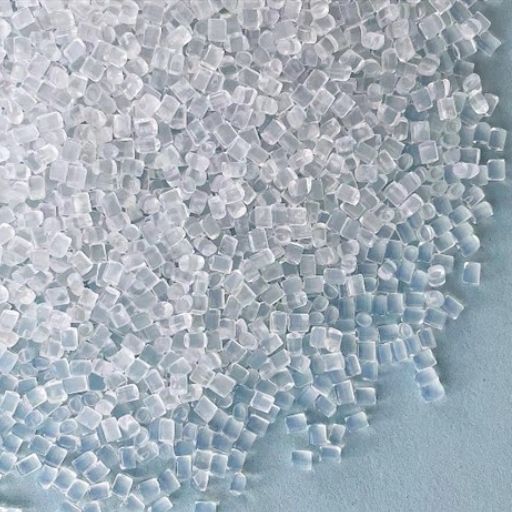
Due to several key properties, the PFA resin (Perfluoroalkoxy alkane) is suitable for demanding applications. Its remarkable chemical resistance guarantees its safety in the presence of even aggressive solvents and corrosive agents. Another essential feature is thermal stability since PFA can operate from cryogenic temperatures to more than 260°C. Its nonstick surface properties impart low friction coefficient values and, therefore, are helpful in applications requiring smooth and clean surfaces. PFA also introduces excellent electrical insulation, good transparency, and high UV resistance, making PFA an ideal choice in technology-demanding industries such as electronics, aerospace, and chemical processing.
Exceptional chemical resistance and inertness
Perfluoroalkoxy alkane (PFA) is one of the most suitable materials in aggressive environments due to its exceptional inertness and chemical resistance properties. This polymer can withstand strong acids, bases, solvents, or any hydrogen-containing ion without any deterioration and is therefore used in chemical processing and semiconductor technology. PFA does not react, and the surface is stable over various temperatures. Thus, there would be no chemical reactions or contamination even in long-term exposure to aggressive materials. Moreover, PFA’s inert characteristics make it suitable for excellent use in applications where integrity and the lack of unwanted chemical changes are crucial. The material’s molecular construction enhances its resistance level, guaranteeing strength and durability in extreme conditions.
High temperature resistance and service temperature
PFA is remarkably thermally stable, with a service temperature rating of up to 260 °C (500 °F) without affecting its structure or chemical composition. Because this polymer can retain its form under extreme heat, it is likely to find applications in areas where excellent performance is required, such as the semiconductor or chemical industries. Moreover, it is worth mentioning that PFA maintains its mechanical strength and electrical insulation properties over a wider temperature range and, therefore, can be helpful even at high temperatures or in a cryogenic environment. This multifunctionality is also a continuum from its low thermal conductivity, which enhances its applicability in harsh environments.
Low friction coefficient and non-stick properties
Perfluoroalkoxy alkanes (PFA) have valuable applications in industries where metal wear and erosion have to be minimal because of their low coefficient of friction. This is partly a result of their self-cleaning properties as fewer particles, fluids, or other mediums adhere to them. These properties are especially beneficial in processes like painting machine components, pipe coiling systems, or mold making, where cleaning processes must be easy and the build-up of materials should be minimal. The chemical inertness of PFA increases these characteristics in that they will have a longer life and be stable even when immersed in corrosive chemicals or intense conditions. Therefore, these features render the PFA material critical in industries with high precision levels and powerful forces, such as the food industry, manufacturing of medical devices, and even the aerospace industry.
How is PFA resin processed and manufactured?
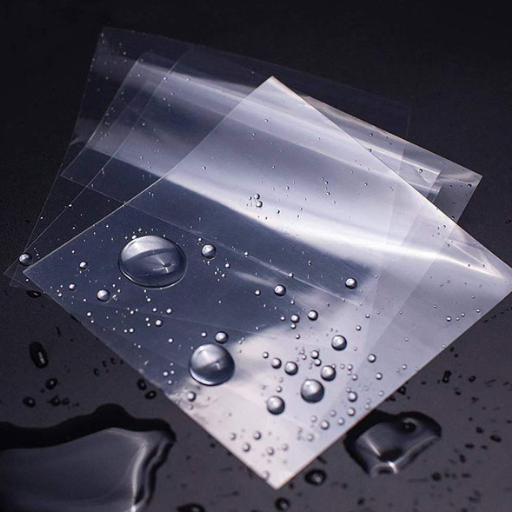
PFA resin is obtained through multiple specialized processing and manufacturing steps. The process begins by polymerizing perfluoroalkyl monomers; some chemical processes are adopted to ensure consistency. After polymerization, the unrefined thermoplastic perfluoroalkoxy can be turned into pellets, molded, or extruded into different forms. There are controlled and high temperatures where the material can withstand suiting its characteristics to gain desired attributes, for example, thermal resistance and stability. Rigid structure elements that are or can be manufactured with these compounds, such as PFA, have multiple applications, including the aerospace and chemical industries, and have confirmed rigorous mass production requirements, thus being manufactured through injection molding or extrusion, also to name a couple of extrusion techniques.
Extrusion techniques for PFA resin
Perfluoroalkoxy (PFA) resin is an extrusion material that requires enforced conditions and cutting-edge machinery to achieve effortless integration. PFA resin is widely used in various industries, such as chemical, semiconductor, and electrical, due to its high strength against chemicals and elevated temperatures, amongst other reasons. To showcase how careful the extrusion process is, the resin is moisture-free to maximize end product quality.
Most industrial plants prefer PFA to be processed with high-temperature thermoplastic extruders because it generally melts around 580°F (304°C). Both the screw and barrel must have uniform heating in them to avoid degradation and allow for a good flow. On the other hand, correct dimensional tolerances and good surface quality can only be obtained through a careful design of the extrusion die. The usual range of products made by extrusion from PFA are tubes, wire insulations, and sheets, which will require further operations such as annealing to relieve internal stresses and improve some material properties.
More sophisticated extrusion technologies might involve multi-layer coextrusion, in which PFA is placed between other materials to improve their functional capabilities in specific applications. The entire extrusion process, from the extruder to the end product, constantly undergoes quality controls and checks to ensure that the end product meets the requirements.
Injection molding of PFA materials
PFA (Perfluoroalkoxy alkane) Injection molding, which can also be referred to as a technological process, can be applied to creating parts of numerous shapes and requires excellent chemical and heat resistance levels. Because of PFA’s high melting temperature, the parameters temperature and injection pressure must be precisely controlled so that the injections flow uniformly without defects such as voids or warping. The molds are mostly made of heavy-duty, heat-tolerant metals that bear the stresses caused by the processing conditions. Furthermore, because PFA has low friction expansion properties, attention must be paid during the design phase of the mold to ensure its easy removal and reduce procurement wear components. As a result, the components possess high strength, enabling them to be used in highly demanding sectors such as semiconductor fabricating, medical equipment, and the chemical industry.
Compression molding options for PFA
In compression molding of PFA, specific high-temperature molds are employed, in most cases over 580 degrees Fahrenheit plus, to ensure proper material flow properties and curing. As a result of PFA melt-viscosity characteristics, uniform pressure systems become crucial in providing the needed pressure needed to avoid defects such as warpage or voiding in the molded parts. This process generally uses forming methods whereby PFA pellets are first formed into a preheated, semi-finished shape to promote better mold filling. In addition, coatings or finishes are often used to improve release performance and increase tool longevity, given the low surface energy of the PFA.
Few businesses may use compression molding while manufacturing valve liners, pump diaphragms, or insulating films because those components require a nonreactive and thermally resistant material (PFA). Modern alternatives also involve embedding several stages of compression in the cycle to achieve improved intricate shapes that adhere to the batch’s standards for strict business use.
What are the primary applications of PFA resin in various industries?

PFA (Perfluoroalkoxy alkane) resin is accepted in various industries for its characteristics, such as chemical inertness, thermal stability, and non-stick properties. PFA is suitable for fabricating tubing, fittings, and wafer carriers in semiconductors because it can endure harsh chemical environments and elevated temperatures. The chemical processing industry utilizes PFA as linings of tanks, pipes, valves, and seals to prevent the effects of corrosion. Also, in the healthcare field, PFA is used to assemble fluid handling systems and specific medical-grade tubing due to its biocompatibility and high purity. Its inert and heat resistance properties also help it be used for manufacturing parts for the aerospace and automotive industries, for which accuracy and reliability are the key requirements. A mix of these applications further illustrates the range of industrial challenges that PFA can meet.
PFA in semiconductor manufacturing
Perfluoroalkoxy alkanes (PFA) are essential in manufacturing semiconductors due to their material characteristics. PFA can endure the rough acids and solvents used for etching and cleaning, mitigating pollution and increasing the life span for the components, owing to its tremendous chemical durability. Additionally, high thermal stability makes it easy to use in areas where regulators demand a certain threshold, such as wafer processing and evaporating chambers. Besides, the outstanding dielectric characteristics of PFA are vitally essential to provide electrical insulation in chemical delivery systems and insulating parts. These characteristics, in addition to its purity and strength, assist PFA in meeting the significant requirements imposed on semiconductor manufacturing processes.
Chemical processing equipment made from PFA
PFA-based components are used in the fabrication of chemical processing equipment used in fields where there is a need for high chemical resistance and thermal stability. I can attest that PFA components such as tubing, valves, and liners are beneficial as they allow corrosion and high temperatures while maintaining optimal purity. Moreover, their non-stick characteristics and reduced extractability improve the compound’s performance, thus making it applicable for transferring acids, high-purity fluids, and corrosion-resistant systems. Such a combination of properties results in improved reliability and efficiency of operations in corrosive industrial processes.
Aerospace and automotive applications
Due to its outstanding reliability and stability at high temperatures, PFA has gained usage in the automotive and aerospace industries. PFA demonstrates exceptional ability to withstand high thermal expansion, making it a valuable material for deployment in Aerospace systems for parts like fuel lines, seals, and insulation in extreme conditions. Similarly, in automotive engineering, PFA is employed for wire coatings, sensor housings, and fluid transfer systems, which provide excellent durability, electrical insulation, and chemical resistance. In modern-day settings, PFA is essential for improving the performance and reliability of vehicles.
How does PFA resin compare to conventional thermoplastics?
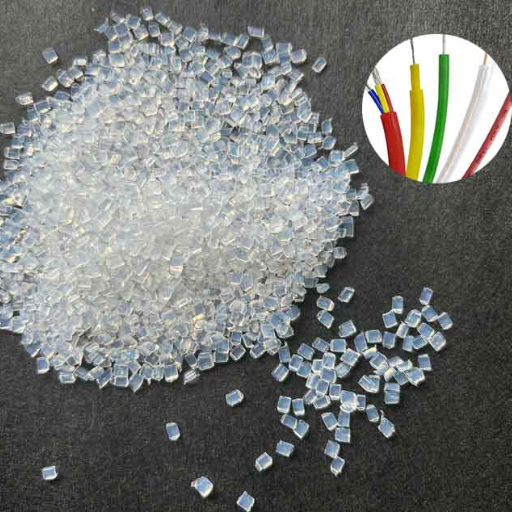
PFA resin focuses more on performance and reliability than thermoplastic cost-effectiveness by outperforming thermoplastics in almost every domain. For instance, one of PFA’s most significant advantages is its ability to sustain high operating temperatures exceeding Standard thermoplastics’ limitations. The PFA thermoplastic polymer is has dominate chemical resistance a characteristic that is important for operating in harsh conditions or environments lacking corrosive resistance. The unique properties of PFA thermoplastics also include non-adhesive and low-friction material, which makes it beneficial for deployment in areas that experience high material stickiness. Moreover, the most effective and dependable solution for high purity and great stress withstand capacity is PFA resin.
Mechanical properties comparison
Mechanical characteristics-wise, PFA (Perfluoroalkoxy alkane), in relevance to thermal stability, is arguably one of the best materials known to mankind as it has a low temperature and a high-temperature boundary. That is typically realized in the range of -200 °C to 260 °C, which allows the application of PFA PFA to perform well even in a cryogenic state or extremely hot conditions. Furthermore, the elongation at break is also significant as the tensile strength ranges from 20-35MPa, which guarantees excellent stress resistance in an ideal production process. As aforementioned, PFA has an interesting tensile characteristic, allowing it to stretch three times before breaking.
Although a PFA does perform well in an aggressive chemical environment, a PFA is not as hard and has a weaker abrasive quality than PEEK or polycarbonate. Because of this, if PFA is used in abrasive applications, it wouldn’t perform that well. If you’re looking to utilize PFA in applications demanding a mechanical or dynamic structure, it wouldn’t be an issue as PFA has a low coefficient friction, which extends to less than .1. All of these characteristics make PFA a primary contender when looking for resistance or protection against chemically aggressive (semiconductors and chemical processing) or mechanically volatile (food grade) environments.
Thermal and electrical characteristics
Polytetrafluoroethylene, commonly referred to as PTFE, and fluoromer polymers such as PFA feature a remarkable operating temperature range that spans -200 degrees centigrade to 260 degrees Celsius. The thermal capabilities of these materials translate into the integrity and stability of their implementation under cycling thermal conditions. PFA has superior insulation characteristics with a dielectric strength of greater than 25 kilovolts per millimeter, which enables its high performance for electrical encasing systems in electronics and power systems. In addition, a declining dielectric constant and a low dissipation factor made it applicable for precision and high-frequency instruments. These thermal and electric properties combine to indicate other applications of PFA in thermal and electric performance-demanding environments.
What are the environmental and safety considerations when using PFA resin?

In the case of PFA resin, it is exceptionally paramount to understand its distinctive attributes, which are long-term chemical inertness and dielectric strength properties. While these aspects provide performance advantages, they are challenging in the context of end-of-life disposal strategies. Therefore, it contributes to long-term pollution and is also classified as non-biodegradable. Moreover, the PFA resin is notorious for being highly toxic to the environment and humanity because perfluorinated compounds are released during manufacturing. Furthermore, due to being highly hazardous, PFA resin has specific requirements such as protection gear and ample room. Lastly, while recycling this substance is possible, it is only marginally viable. Thus making it all the more important to use this product sustainably.
Recyclability and disposal of PFA materials
The recyclability of PFA (perfluoroalkoxy) materials is limited primarily because of their high thermal and chemical stability. In mechanical recycling processes, quality degradation after processing tends to lower the efficacy of such operations, although monomers can be recovered via pyrolysis for remanufacturing. PFA’s end of life seems to invariably be through conversion to flue gas, assuming controlled incineration with appropriate facilities to prevent the emission of noxious by-products such as fluorinated gases. Landfilling is an alternative, but it poses some risks because of the durability of the material and the concern of leaching. To lower environmental burdens, it is essential to approach waste reduction by designing and increasing the product’s lifetime.
Where can I find PFA resin suppliers and get pricing information?
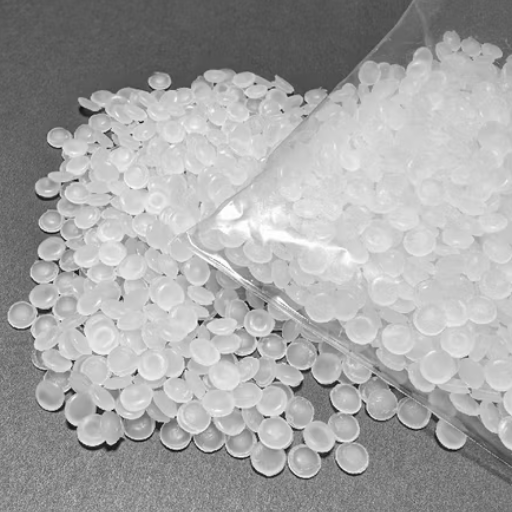
In numerous ways, you can uncover PFA resin suppliers and pricing details. For example, well-known manufacturers and suppliers such as Chemours, Daikin, and Solvay often list the catalogs of products they manufacture alongside prices on their sites. In addition, sites such as Alibaba, GlobalSpec, and Thomasnet host many suppliers whose prices and quality you can check. However, if you want accurate and current prices, it is better to approach the suppliers and ask them to prepare quotations meeting your required volumes and specifications. Connecting with people in the same industry or going to trade fairs and getting regulatory suppliers at reasonable prices is also possible.
Major manufacturers of PFA resins
Chemours, Daikin Industries and 3M are the largest PFA (Perfluoroalkoxy alkane) resins manufacturers. Chemours is associated with the Teflon™ brand and can provide high-performance PFA resins with tenacity in heat and chemicals. Daikin Industries is a major supplier of fluoropolymers, including PFA, which is deemed adequate for multiple applications. Similarly, 3M has a product, Dyneon, which is PFA, engineered to perform outstandingly well under harsh conditions. This category of manufacturers is characterized by their products’ high quality and uncompromising approach to industry standards.
Factors affecting PFA resin pricing
The pricing of PFA resin is directly associated with the costs of raw materials, production processes, and demand in the market. First, fluoropolymer feedstock is the foremost determinant in pricing because raw material availability usually leads to variability in price. Secondly, another factor contributing to the cost structure is the intricacy of the production processes, which require advanced technologies and a high level of quality control. Moreover, market price sensitivity is driven by the expansion of the use of PFA resin in the semiconductor, automotive, and chemical industries, with the growing requirements for them leading to an increased demand. Further, the pricing dynamics are shaped by trade regulations regarding tariffs and the costs of transporting the resins to various market locations. Finally, costs could be affected, in one way or another, by the multiple innovations and technologies that have been brought forth and are still being brought forth by manufacturers due to the costs of research and development. Information on these factors is essential for stakeholders to gain an insightful and informed assessment of market trends and forecast price fluctuations.
References
Frequently Asked Questions (FAQ)
Q: What is PFA resin, and how does it differ from other fluoropolymer plastics?
A: PFA (perfluoroalkoxy) resin is a high-performance fluoropolymer plastic that combines PTFE’s excellent chemical resistance with a thermoplastic’s melt processability. It is a copolymer of tetrafluoroethylene and a perfluoroalkyl vinyl ether, offering superior properties to other fluoropolymer resins. PFA stands out for its high purity, outstanding chemical inertness, and ability to withstand high temperatures, making it ideal for demanding applications.
Q: What are the key properties and applications of PFA fluoropolymer?
A: PFA fluoropolymer offers excellent chemical resistance, high thermal stability, low coefficient of friction, and exceptional dielectric properties. It is commonly used for tubing, valve components, wire, cable insulation, and semiconductor manufacturing. PFA’s properties make it suitable for applications requiring high purity, chemical inertness, and resistance to high temperatures, such as in the chemical processing, pharmaceutical, and electronics industries.
Q: How is PFA resin processed, and in what forms is it available?
A: PFA resins can be processed using conventional thermoplastic techniques such as injection molding and extrusion. They are available in various forms, including pellets for molding and extrusion, powders for coating applications, and raw materials for producing finished products. AGC Chemicals and other manufacturers offer PFA in different grades tailored for specific applications and processing methods.
Q: What makes PFA resin a high-performance polymer compared to other plastics?
A: PFA resin is considered a high-performance polymer due to its exceptional combination of properties. These include outstanding chemical resistance, high thermal stability (up to 260°C continuous use), excellent electrical properties, low permeation rates, and non-stick characteristics. These attributes make PFA superior to many other plastics in harsh environments and critical applications where reliability is paramount.
Q: How does PFA compare to PTFE (polytetrafluoroethylene) regarding properties and applications?
A: PFA and PTFE are fluoropolymers with excellent chemical resistance, but PFA offers some advantages. PFA can be melt-processed, allowing for easier fabrication of complex parts through injection molding and extrusion. It also has better mechanical properties at elevated temperatures and lower permeability to gases and moisture. However, PTFE has a slightly higher maximum use temperature and lower cost, making their choice dependent on specific application requirements.
Q: What industries commonly use PFA fluoropolymer resins, and for what purposes?
A: PFA fluoropolymer resins are widely used in industries such as chemical processing, semiconductor manufacturing, pharmaceuticals, food processing, and automotive. They are used for flexible tubing, high-purity fluid handling systems, wire and cable insulation, chemical tank linings, and components in valves and pumps. The semiconductor industry, in particular, relies on PFA for its high purity and resistance to aggressive chemicals used in wafer processing.
Q: Are there any environmental or safety concerns associated with PFA resin?
A: While PFA resin is considered inert and safe for most applications, there are some environmental concerns related to the production and disposal of fluoropolymers. The manufacturing process may involve fluorinating compounds that can have ecological impacts if not properly managed. Additionally, incineration of PFA at very high temperatures can produce harmful byproducts. However, PFA products are generally safe when used as intended and do not pose significant risks during everyday use.

